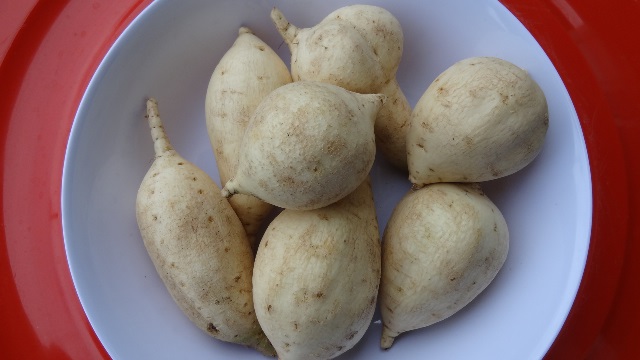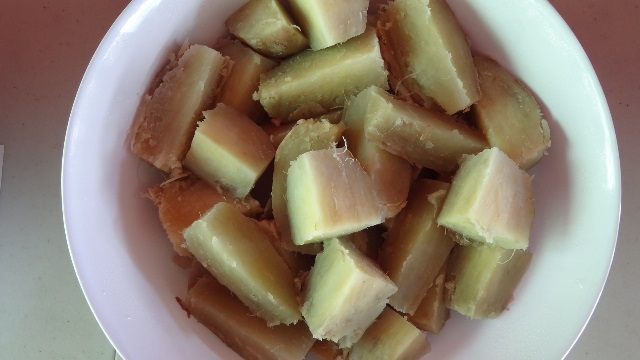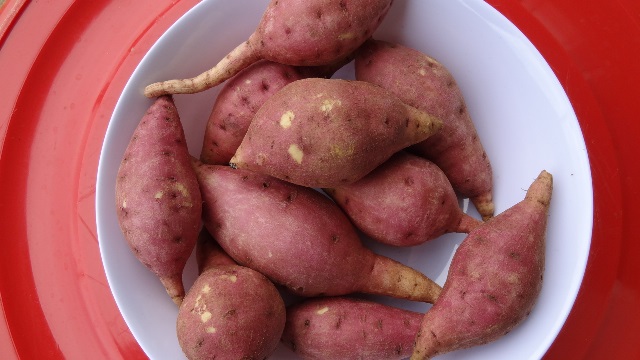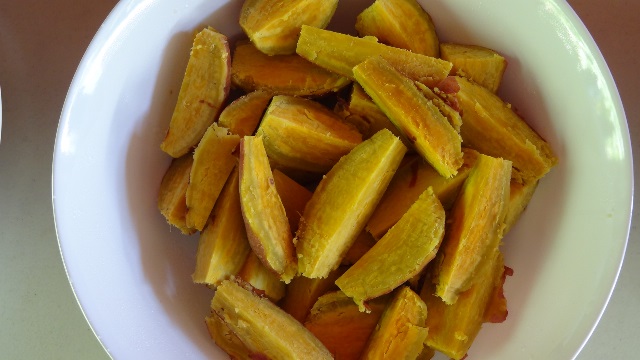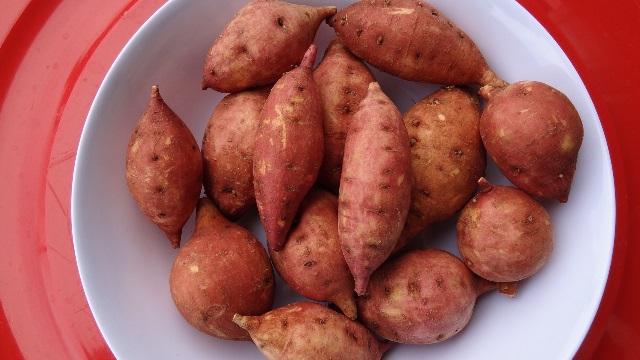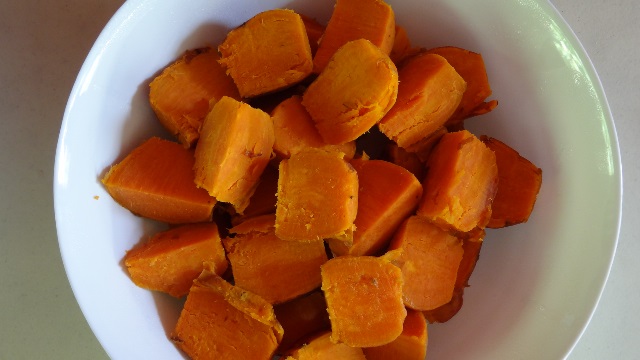KOSRAE, FSM. Dr. Virendra M. Verma, Researcher and Extension Specialist, Kosrae Agricultural Experiment Station, Kosrae.
Salinity and drought still remain the major abiotic stresses, which limit and pose a threat to agricultural production in many parts of the world including Micronesia. Dr. Virendra M. Verma’s research project entitled, “In Vitro Selection for Salt Tolerance in Sweet Potato,” is one effort to counteract these abiotic challenges, and contribute in sustainable agricultural production in Micronesian region. Approved by the United States Department of Agriculture, National Institute of Food and Agriculture (USDA-NIFA), this project focuses on developing salt tolerant varieties of Sweet Potato (Ipomoea batatas (L.) Lam.). The project director of this project, Dr. Verma, shared that both plant biotechnology and breeding methods were employed for the selection, assessment, and development of salt tolerant Sweet Potato varieties. Sweet Potato, a common food crop in Micronesia, was selected as the focus crop for this project because of its ‘typhoon-proof’ nature. Even after a typhoon(s), the storage roots of sweet potato remain protected under the ground, and can be used to reestablish the crop. Considering the local climatic conditions and socio-cultural demand for Sweet Potato in Micronesia, the development of salt tolerant varieties of the crop in the region, is of great significance.
Spread over a million square miles of the Western Pacific Ocean with a total land area of only about 271 square miles, the Federated States of Micronesia is made up of 607 small islands. Agriculture is an important industry that could greatly help in the economic development and growth through bringing food self-sufficiency in the region. However, current agricultural programs in Micronesia, are mostly at subsistence level, and economic development is largely dependent on the outside world. Serious damage caused by natural calamities such as wave surges, salt water flooding, and drought, continually pose challenges for the local farmers. Moreover, lack of technical know-how and changing life style along with the food habits of islanders, leading to an increase in the consumption of imported foodstuff; have led to an overall decline in local agricultural production in the region.
With the effects of global climate change and the increasing occurrence of natural disasters, farmers must be made aware of, and trained to adopt preventative measures to minimize impact of these disasters on their agricultural operations. Of all the cultivated root and tuber crops, sweet potato is probably the best at adapting quickly to new conditions. But still, its growth and development can be affected by adverse environmental conditions such as frequent wave surges and salt spray. Salinity, an abiotic stress that combines elements of water deficiency and sodium toxicity resulting in lost crop yield and arable land, is among the most serious and widespread of agricultural problems on the Micronesian islands. Hence, the focus of this project is to develop salt tolerant varieties of sweet potato.
Sweet potato ranks seventh in the world among food crops with respect to annual production, and it is the fifth most important food crop in developing countries. It is a highly functional low calorie food that contains various key nutrients. Every sweet potato contains high levels of starch, along with abundant vitamins (B-carotene, B1, C and E), minerals (Potassium) and dietary fiber (such as cellulose and pectin). To meet the ever-increasing demands of this nutritionally-rich and culturally-preferred food crop, there is crucial need to increase its agricultural production.
The cultivation of sweet potato is becoming more and more important with each passing day as the crop has great potential as food product. It needs a few inputs and has potentially high yields, which make it an inexpensive food. In addition, it is well suited for processing into food products for people and animals alike. Considered as the crucial staple crops for ensuring food, nutritional, and economic security, sweet potatoes are placed on high agricultural priority in the Micronesian region. However, the limitations in availability of salt-tolerant germplasm, and disease-free and elite seedlings, are a major bottleneck in sweet potato production. The ability to successfully grow sweet potato for sustenance in Micronesia depends on availability of salt tolerant varieties and on skillful use of appropriate cultivation techniques.
The study undertaken in Dr. Verma’s this research project, involved the assessment and development of salt tolerance in sweet potato through in vitro, greenhouse, and field selection of tissue-culture raised plants. To establish aseptic cultures of collected sweet potato germplasm, various in vitro experiments were performed. Different concentrations of sodium chloride were used for in vitro selection of salt tolerant germplasm, which was further evaluated for salt tolerance in the greenhouse., In vitro selected germplasm of salt tolerant sweet potato was finally field evaluated at eight sites in four replications. Results based on various physiological and morphological parameters collected during this research indicate that the developed salt tolerant varieties of sweet potato performed very well at coastal sites where salt spray due to high wave surges is very frequent. The findings of this research are being disseminated locally and globally through presentations in national and international conferences. To provide local farmers and producers with guidelines for cultivating sweet potato, an extension publication in form of a book entitled, “Sweet Potato Cultivation Guide,” has been published.
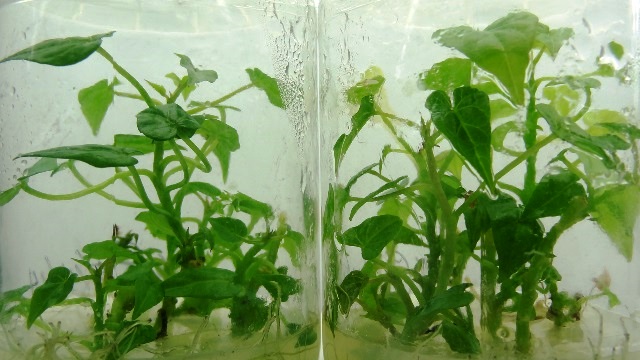
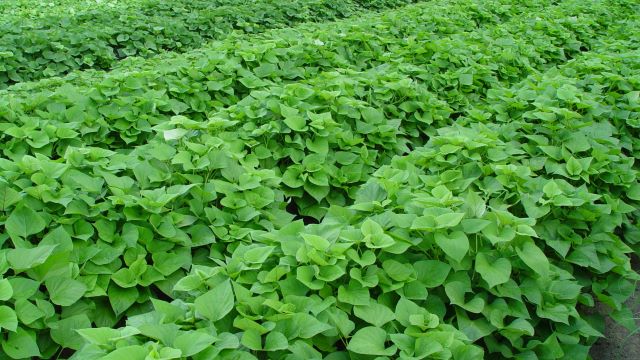
The cultivation of developed salt tolerant sweet potato varieties in Micronesia through this research project will lead to successful production of sweet potato in the region, and contribute in sustaining traditional socio-cultural life of the Micronesian people, and thereby, play a critical role in ensuring food and nutritional security of the region. Examples of raw and cooked test varieties are below. Recently, many countries have embraced sweet potato as a substitute for imported carbohydrates and for attaining national food security goals. The crop is also gaining importance as a key income earner for many small-scale producers, and a foreign exchange earner for many countries. As such, there is a growing global demand for sweet potato. It is our hope that the outcomes of this research will provide current and potential farmers and producers with practical information that will assist in developing sustainable crop production systems, and increasing productivity of sweet potato in Micronesia and beyond.
